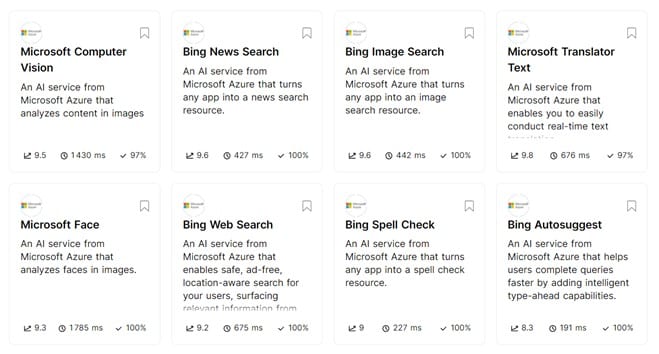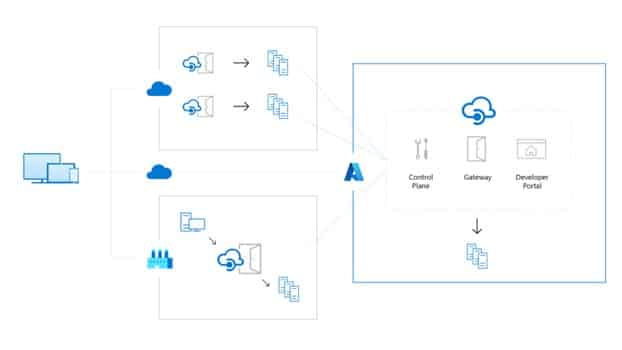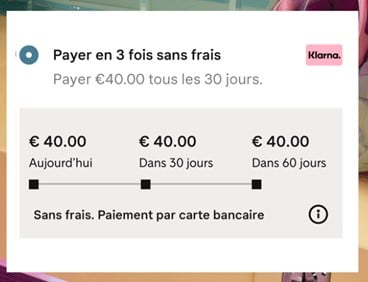APIs: necessary to perfect the user experience?
31/08/2021
6min
Tables des matières
Whether it is to facilitate the work of developers or to improve the end-user experience, the use of APIs has become indispensable. It allows to guarantee a finished product that is both efficient and reliable.
Today, the end user has become very demanding. Applications and services have evolved tremendously, differing radically from their siloed predecessors. Developers are now creating ecosystems of microservices. These programs offering unique functionalities are intended to be interconnected. For the sake of usability, the integration between them must be seamless. For this, they are essential since they provide an interface between all these programs.
What is an API?
An API for application programming interface is an intermediary between two applications. In concrete terms, it's a set of variables and protocols that enable simple data exchange with an existing application. Take a look at the 4 essential steps to choosing and implementing an API.

Some examples of popular Microsoft APIs (source: RapidAPI)
How does an API work?
The API creates a connection with a software brick composed of a group of features. It provides third-party applications with a list of elements that allow access to these features, as well as instructions on how to use them. The communication between the server (the API provider) and the client (the third-party application) is usually based on the HTTP protocol. The final service remains a black box: only the parameters provided by the API are accessible.
The different types of APIs
There are three main types of APIs: private, partner and public.
Private APIs are used exclusively within a company. They allow interfacing the different internal applications. For example, they serve as an intermediary between the deep layers of the various software applications, which are stable, and the user interfaces, which are subject to constant change. Partner APIs are shared only with privileged partners of the company. They allow access to certain applications, for customers or suppliers for example.
Public APIs, as the name implies, are open to anyone. Any third-party application can use them to link to the application that owns the API.
Some examples of APIs
We use APIs every day without realizing it. For example, the payment features of many Internet merchants are based on APIs. For example, the site allows its visitors to make a secure payment through the services of their personal bank. Google Maps also offers an API that allows any application to access its features to easily display a location. We can also mention the buttons that allow to share content directly on various social networks.
APIsation, or when development relies on the advantages of APIs
The trend of increasingly using APIs is called APIsation. This movement has accelerated with the emergence of mobile applications. These applications have a strong interest in developing an API that will allow other applications to easily communicate with them.

Today, there are all-in-one tools for API management: this is the case of Microsoft Azure Here is a diagram of the API management platform.
What are the benefits of APIsation for the end user?
The interests of APIs for the end user are numerous. Their systematic implementation allows the development of efficient and ergonomic services. It also offers better data security, since users no longer need to provide certain private information (such as bank details) to the application they are using.
This improves the customer experience, as customers have access to faster services that are better adapted to their changing needs.
Increased productivity for more successful applications
Thanks to the implementation of APIs, it is possible to use many different functionalities within the same application. It is no longer necessary to compile all the tools within the software: the software can connect to the "bricks" it needs via APIs. For example, most applications do not develop their own payment module, but use APIs to do so. One example is the Klarna payment application (which allows users to split their online payments across a large number of partner merchants).

The Klarna payment application allows you to split payments online.
APIs allow users to benefit from very complete applications. They are also particularly reliable, which is essential for critical functions (online payments...)
Optimized browsing speed
API developers spend a lot of energy optimizing them. As a result, they are extremely fast, with very short server response times. This gives the end user an unparalleled speed of navigation, while giving him access to powerful and reliable tools. In today's fast-paced world, the mobile user places great importance on the speed of applications.
A smoother learning curve
A well-designed API is quickly used by a large number of developers. Thus, many applications use the same APIs. The consequence for users is that the learning curve of a new application is much smoother because some modules of the application will already be familiar to them.
A final product always at the cutting edge
The availability of powerful external APIs naturally creates a trickle-down effect for users. They allow developers to easily and quickly create new services that offer more and more functionality, perfectly in line with consumer needs. Frequent updates ensure that functionality is always at the forefront of innovation and trends.
As you can see, APIization is a key success factor for optimizing the user experience and meeting user requirements. Find out more about API Gateways.
Interested in this topic? Read our article on APIsation, the missing link in digital insurance.
Do you already have a specific need or do you just want to know more? Discuss it with our team of developers now!
APIs: necessary to perfect the user experience?
31/08/2021
6min
Tables des matières
Whether it is to facilitate the work of developers or to improve the end-user experience, the use of APIs has become indispensable. It allows to guarantee a finished product that is both efficient and reliable.
Today, the end user has become very demanding. Applications and services have evolved tremendously, differing radically from their siloed predecessors. Developers are now creating ecosystems of microservices. These programs offering unique functionalities are intended to be interconnected. For the sake of usability, the integration between them must be seamless. For this, they are essential since they provide an interface between all these programs.
What is an API?
An API for application programming interface is an intermediary between two applications. In concrete terms, it's a set of variables and protocols that enable simple data exchange with an existing application. Take a look at the 4 essential steps to choosing and implementing an API.

Some examples of popular Microsoft APIs (source: RapidAPI)
How does an API work?
The API creates a connection with a software brick composed of a group of features. It provides third-party applications with a list of elements that allow access to these features, as well as instructions on how to use them. The communication between the server (the API provider) and the client (the third-party application) is usually based on the HTTP protocol. The final service remains a black box: only the parameters provided by the API are accessible.
The different types of APIs
There are three main types of APIs: private, partner and public.
Private APIs are used exclusively within a company. They allow interfacing the different internal applications. For example, they serve as an intermediary between the deep layers of the various software applications, which are stable, and the user interfaces, which are subject to constant change. Partner APIs are shared only with privileged partners of the company. They allow access to certain applications, for customers or suppliers for example.
Public APIs, as the name implies, are open to anyone. Any third-party application can use them to link to the application that owns the API.
Some examples of APIs
We use APIs every day without realizing it. For example, the payment features of many Internet merchants are based on APIs. For example, the site allows its visitors to make a secure payment through the services of their personal bank. Google Maps also offers an API that allows any application to access its features to easily display a location. We can also mention the buttons that allow to share content directly on various social networks.
APIsation, or when development relies on the advantages of APIs
The trend of increasingly using APIs is called APIsation. This movement has accelerated with the emergence of mobile applications. These applications have a strong interest in developing an API that will allow other applications to easily communicate with them.

Today, there are all-in-one tools for API management: this is the case of Microsoft Azure Here is a diagram of the API management platform.
What are the benefits of APIsation for the end user?
The interests of APIs for the end user are numerous. Their systematic implementation allows the development of efficient and ergonomic services. It also offers better data security, since users no longer need to provide certain private information (such as bank details) to the application they are using.
This improves the customer experience, as customers have access to faster services that are better adapted to their changing needs.
Increased productivity for more successful applications
Thanks to the implementation of APIs, it is possible to use many different functionalities within the same application. It is no longer necessary to compile all the tools within the software: the software can connect to the "bricks" it needs via APIs. For example, most applications do not develop their own payment module, but use APIs to do so. One example is the Klarna payment application (which allows users to split their online payments across a large number of partner merchants).

The Klarna payment application allows you to split payments online.
APIs allow users to benefit from very complete applications. They are also particularly reliable, which is essential for critical functions (online payments...)
Optimized browsing speed
API developers spend a lot of energy optimizing them. As a result, they are extremely fast, with very short server response times. This gives the end user an unparalleled speed of navigation, while giving him access to powerful and reliable tools. In today's fast-paced world, the mobile user places great importance on the speed of applications.
A smoother learning curve
A well-designed API is quickly used by a large number of developers. Thus, many applications use the same APIs. The consequence for users is that the learning curve of a new application is much smoother because some modules of the application will already be familiar to them.
A final product always at the cutting edge
The availability of powerful external APIs naturally creates a trickle-down effect for users. They allow developers to easily and quickly create new services that offer more and more functionality, perfectly in line with consumer needs. Frequent updates ensure that functionality is always at the forefront of innovation and trends.
As you can see, APIization is a key success factor for optimizing the user experience and meeting user requirements. Find out more about API Gateways.
Interested in this topic? Read our article on APIsation, the missing link in digital insurance.
Do you already have a specific need or do you just want to know more? Discuss it with our team of developers now!




